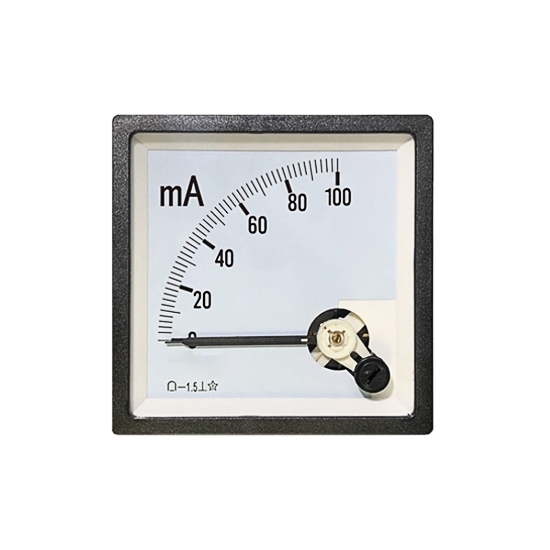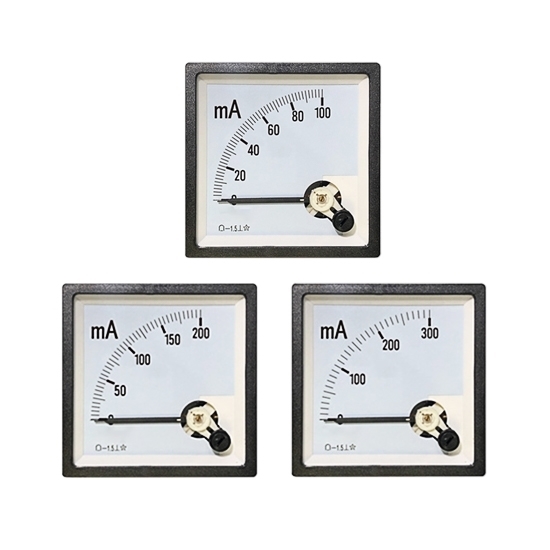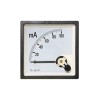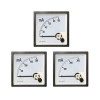



- Stock: In Stock
- Model: RDDLZ-DCAMM-100
- Weight: 1.00
- SKU: RDDLZ-DCAMM-100
Available Options
A DC analog milliamp meter, also known as a DC analog milliammeter, is an instrument used to measure electric current in direct current (DC) circuits. It typically has an analog display consisting of a moving needle or pointer on a scale, where the position of the needle indicates the current value being measured.
Features:
- Needle and Scale Display. The most prominent feature of an analog milliamp meter is its needle or pointer that moves across a calibrated scale. The position of the needle indicates the amp being measured.
- Analog Technology. Analog milliamp meters use analog components such as moving coils, magnets, and springs to create the mechanism that translates amp into needle movement.
- Range Selection. Analog milliamp meters often come with multiple amp measurement ranges. Users can select the appropriate range based on the expected amp to achieve better accuracy and resolution.
Specification:
- Model: RDDLZ-6C2B-mA
- Measuring Range: DC 0-100mA (other range, contact us)
- Accuracy Class: 1.5
- Display Type: analog only
- Overload Ratio: 100%
- Damping Time: ≤4s
- Operating Temperature: 0-55 ℃
- Mode of Installation: mounted perpendicular to horiaaontal
- Weight: 1 kg
Wiring Diagram:
Dimension:
Tips: How Does DC Analog Milliamp Meter Work?
A DC analog milliamp meter operates on the principle of electromagnetic induction. It consists of a coil of wire placed within a magnetic field generated by a permanent magnet. When a direct current (DC) flows through the coil, it generates a magnetic field that interacts with the existing magnetic field. This interaction causes the coil to rotate due to the torque produced, and the rotation is proportional to the current passing through the coil. The coil is connected to a pointer on a calibrated scale, allowing the user to read the current value directly in milliamperes. In essence, the meter converts the electrical current into mechanical movement, which is then translated into a visual reading on the scale, providing a simple and intuitive way to measure DC currents.
